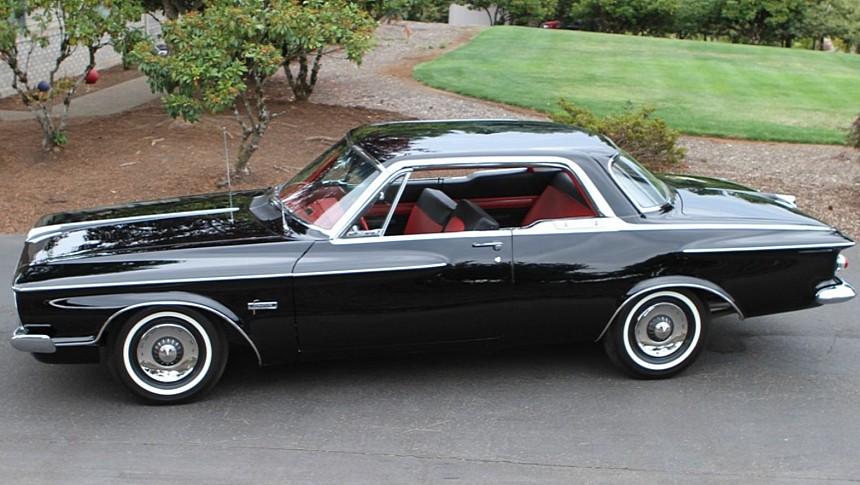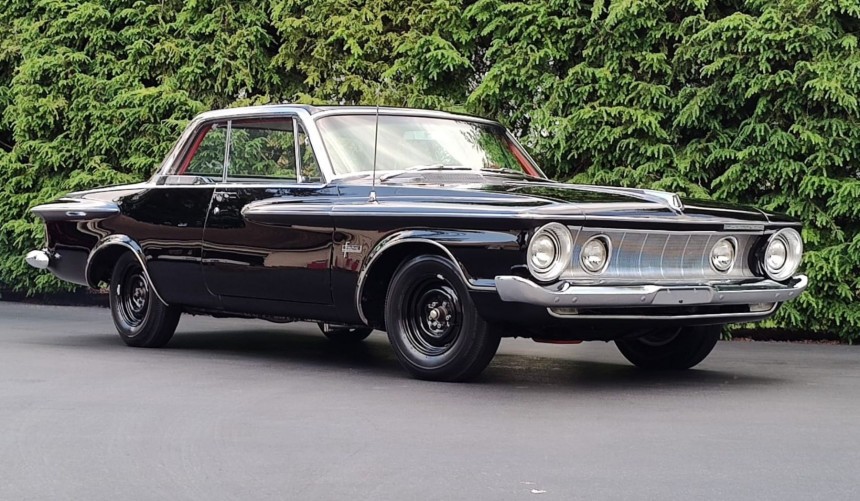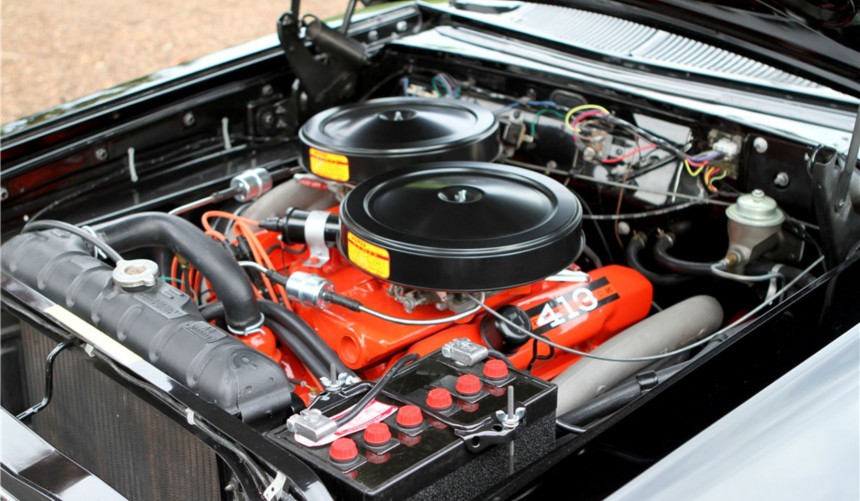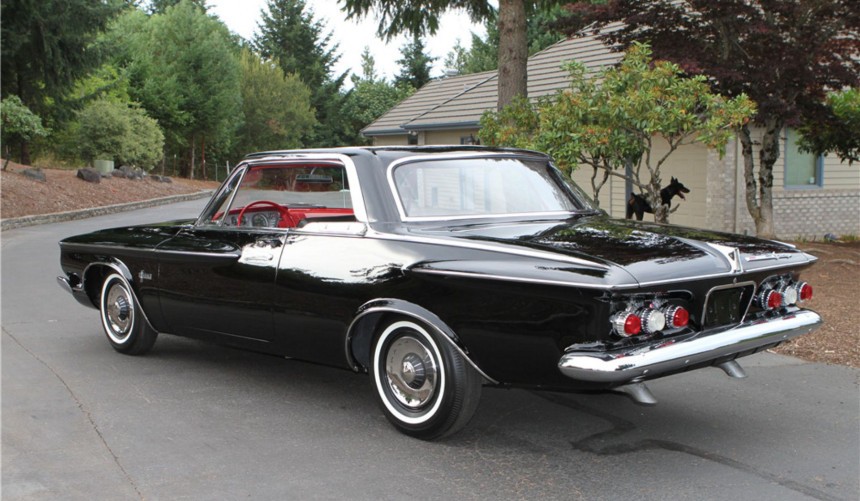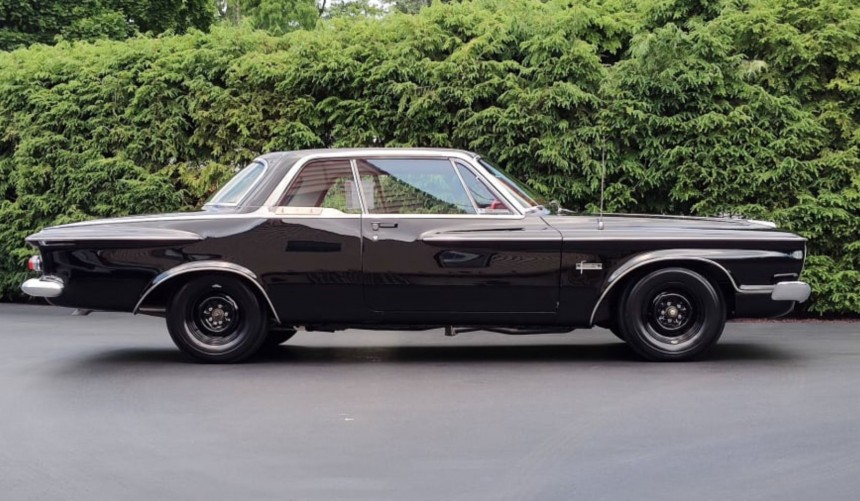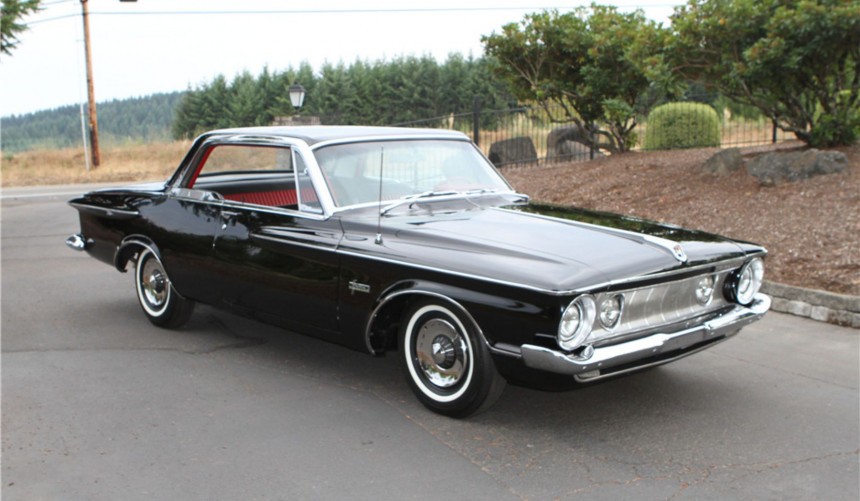Built around Chrysler's new B-body intermediate platform and hiding a humongous V8 under the hood, the Fury Super Stock 413 appeared two years before the first Pontiac GTO and packed considerably more power.
Ask any knowledgeable enthusiast or automotive historian which car kicked off the muscle car craze as we know it today, and you'll get the same answer: the 1964 Pontiac GTO.
In terms of marketing, that's the right answer because the GTO's success was unquestionably the catalyst for the horsepower wars that lasted from the mid-1960s to the early 1970s. But was it the first-ever muscle car?
The short answer is no.
Though the definition of a muscle car (actually called supercar back then) differs, depending on who you ask, the most common boxes a car has to check to be worthy of this title are: built in the US, intermediate-sized (at most), and of course, massive V8 power.
This formula was employed as early as 1948 when Buick transplanted its potent Rocket V8 from the large and luxurious 98 series into the smaller 88. There's also AMC's 1957 Rambler Rebel that was available with the company's largest V8 engine, as well as the performance V8-powered intermediates by Ford and GM, introduced during that decade.
But, these models are widely dismissed and relegated to proto-muscle car status, while those built from the 1960s onwards are considered thoroughbred muscle cars.
For the 1962 model year, the new, third-generation Plymouth Fury became an intermediate that used Chrysler's latest B-body platform. But, while the chassis was new, the styling was somewhat outdated, which put off younger buyers and resulted in poor sales figures.
In the middle of the model year, Plymouth reintroduced the Sport Fury trim package to turn things around. Moreover, the Chrysler division also rolled out a new package for the most demanding performance enthusiasts.
Officially called Super Stock and theoretically meant for the strip, this package added a very powerful V8 but kept the Fury technically street-legal.
The engine in question was the Max Wedge version of the Chrysler RB, the wedge-chambered big-block introduced in 1958 as a cheaper, more reliable replacement to the first-generation HEMI FirePower.
Displacing 413 cubic inches (6.77 liters), the massive eight-cylinder (dubbed Super Stock 413 in Plymouths and Ramcharger 413 in Dodges) featured high-flow cylinder heads, larger exhaust valves, high-flow cast-iron exhaust manifolds, and two Carter AFB-3447SA four-barrel carbs that sat on top of a cross-ram intake manifold tuned for peak power above 4000 RPM.
Moreover, the blocks were built using a unique, severe-duty casting, receiving larger lubrication passages than other RB engines.
Potential buyers could choose between an 11:1 compression ratio, 410-hp setup for conventional pump gas, or a higher-compression (13.5:1), 420-hp version meant to use racing fuel.
In either case, the 1962 Max Wedge 413 made at least 60 hp more than the 1964 GTO's legendary Tri-Power 389.
Though true enthusiasts preferred a manual (and a T-85 Borg Warner four-speed was available), an automatic transmission was more desirable for those who wanted to win on the drag strip.
In 1962 there was no better automatic than Chrysler's push-button TorqueFlite 727, which came standard on the Fury Super Stock.
With three speeds, a 2.54:1 first gear ratio, and a virtually indestructible construction, the box kept the Max Wedge engine in the optimal power band for longer.
With GM's adequate Super Turbine 300 two-speed and Ford's disastrous three-speed MX Cruise-o-Matic as its only rivals, the TorqueFlite was the best automatic on the strip by a large margin.
Although its impressive powertrain made the 1962 Fury Super Stock more powerful than the 1964 GTO, the latter is still considered the pioneering muscle car.
That's because it was far more extensively advertised, which helped Pontiac sell over 32,000 GTOs in 1964 alone. In contrast, Plymouth only sold 57 Fury Super Stocks and a total of 298 Max Wedge-powered cars in 1962 (the engine was available for all intermediates, except station wagons), mainly because only a few were informed by local dealers that this option was available.
Another reason for the low figure was the hefty price tag. A 1962 Fury Super Stock cost over $3,400 ($34,350 today), while a 1964 GTO had a base price of $2,491 ($24,516 today).
Finally, the 1962 Super Stock looked like any other two-door hardtop Fury. Except for some unique badges, the rabid muscle car featured the same outdated styling as its less-powerful siblings. Today, this might make it attractive for classic sleeper enthusiasts, but, as I mentioned before, the Plymouth Fury's styling was simply unattractive to the younger demographic.
As you can imagine, few of the 57 Fury Super Stock units built in 1962 have survived. Furthermore, the model is just as unknown to the average muscle car enthusiast as it was six decades ago.
Therefore, despite its rarity and historical significance, this terrific classic is surprisingly affordable today.
Though one rarely pops up at auctions or on used car websites, the 1962 Super Stock's value currently stands between $30,000 and $100,000, depending on its condition.
The latest and probably most expensive example that went under the hammer sold at a Mecum auction earlier this year for $126,500 - albeit flawlessly restored and featuring only 26,235 miles (42,221 km) on the odometer.
For more information on this pioneering muscle car, we recommend watching the YouTube video below by RETRO CAR.
In terms of marketing, that's the right answer because the GTO's success was unquestionably the catalyst for the horsepower wars that lasted from the mid-1960s to the early 1970s. But was it the first-ever muscle car?
The short answer is no.
Though the definition of a muscle car (actually called supercar back then) differs, depending on who you ask, the most common boxes a car has to check to be worthy of this title are: built in the US, intermediate-sized (at most), and of course, massive V8 power.
This formula was employed as early as 1948 when Buick transplanted its potent Rocket V8 from the large and luxurious 98 series into the smaller 88. There's also AMC's 1957 Rambler Rebel that was available with the company's largest V8 engine, as well as the performance V8-powered intermediates by Ford and GM, introduced during that decade.
But, these models are widely dismissed and relegated to proto-muscle car status, while those built from the 1960s onwards are considered thoroughbred muscle cars.
The first muscle car of the 1960s
In the middle of the model year, Plymouth reintroduced the Sport Fury trim package to turn things around. Moreover, the Chrysler division also rolled out a new package for the most demanding performance enthusiasts.
Officially called Super Stock and theoretically meant for the strip, this package added a very powerful V8 but kept the Fury technically street-legal.
Max Wedge madness
Displacing 413 cubic inches (6.77 liters), the massive eight-cylinder (dubbed Super Stock 413 in Plymouths and Ramcharger 413 in Dodges) featured high-flow cylinder heads, larger exhaust valves, high-flow cast-iron exhaust manifolds, and two Carter AFB-3447SA four-barrel carbs that sat on top of a cross-ram intake manifold tuned for peak power above 4000 RPM.
Moreover, the blocks were built using a unique, severe-duty casting, receiving larger lubrication passages than other RB engines.
Potential buyers could choose between an 11:1 compression ratio, 410-hp setup for conventional pump gas, or a higher-compression (13.5:1), 420-hp version meant to use racing fuel.
In either case, the 1962 Max Wedge 413 made at least 60 hp more than the 1964 GTO's legendary Tri-Power 389.
Equipped with an automatic that was just as impressive
In 1962 there was no better automatic than Chrysler's push-button TorqueFlite 727, which came standard on the Fury Super Stock.
With three speeds, a 2.54:1 first gear ratio, and a virtually indestructible construction, the box kept the Max Wedge engine in the optimal power band for longer.
With GM's adequate Super Turbine 300 two-speed and Ford's disastrous three-speed MX Cruise-o-Matic as its only rivals, the TorqueFlite was the best automatic on the strip by a large margin.
Subdued styling and a hefty price tag
That's because it was far more extensively advertised, which helped Pontiac sell over 32,000 GTOs in 1964 alone. In contrast, Plymouth only sold 57 Fury Super Stocks and a total of 298 Max Wedge-powered cars in 1962 (the engine was available for all intermediates, except station wagons), mainly because only a few were informed by local dealers that this option was available.
Another reason for the low figure was the hefty price tag. A 1962 Fury Super Stock cost over $3,400 ($34,350 today), while a 1964 GTO had a base price of $2,491 ($24,516 today).
Finally, the 1962 Super Stock looked like any other two-door hardtop Fury. Except for some unique badges, the rabid muscle car featured the same outdated styling as its less-powerful siblings. Today, this might make it attractive for classic sleeper enthusiasts, but, as I mentioned before, the Plymouth Fury's styling was simply unattractive to the younger demographic.
The 1962 Plymouth Fury Super Stock 413 today
Therefore, despite its rarity and historical significance, this terrific classic is surprisingly affordable today.
Though one rarely pops up at auctions or on used car websites, the 1962 Super Stock's value currently stands between $30,000 and $100,000, depending on its condition.
The latest and probably most expensive example that went under the hammer sold at a Mecum auction earlier this year for $126,500 - albeit flawlessly restored and featuring only 26,235 miles (42,221 km) on the odometer.
For more information on this pioneering muscle car, we recommend watching the YouTube video below by RETRO CAR.
